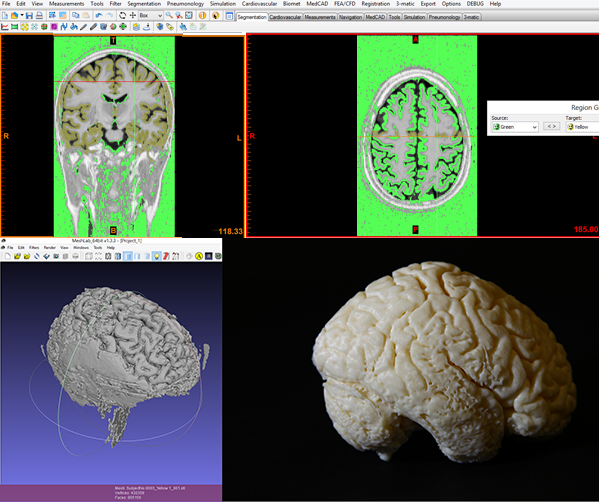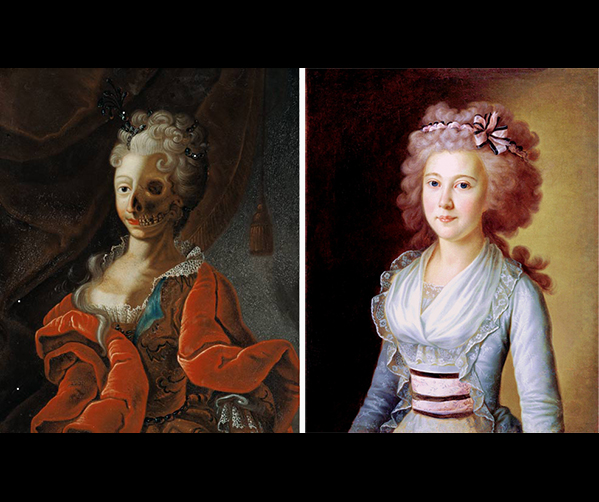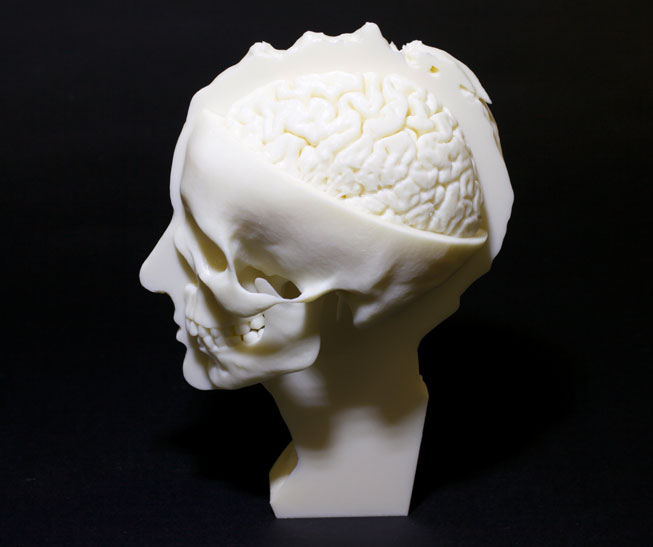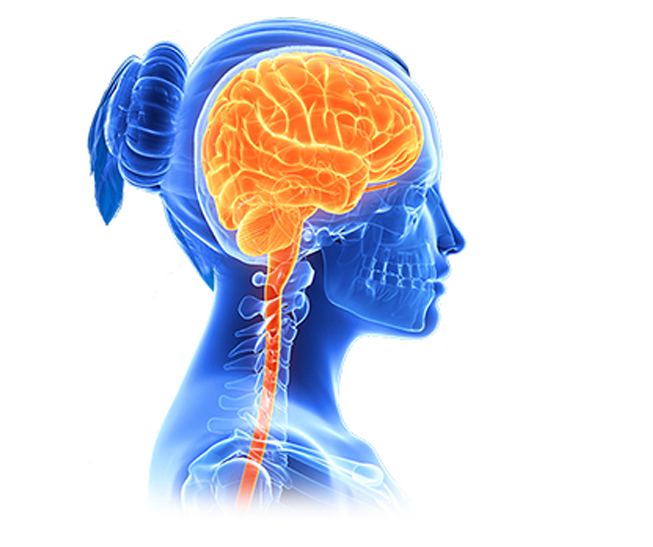Neuroimages produced during our MRI experiments were processed to produce 3D datasets of my brain. These 3D models, were then used to make a 3D printed sculptural objects. The first object we printed was of the grey matter of the artist’s brain. It felt strange to hold a 3D print of my own brain in my hand.
All posts filed under “Experiment”
fMRI experiment design: looking at memento mori
Left: Arcimboldo Giuseppe (1527-1593) – La Vanita. Right: Yermolai Kamezhenkov (1790) A Portrait of a Young Lady: E. N. Likhachyova
We designed an experiment with me as a subject, looking at representations of memento mori while in a Magnetic Resonance Imaging (MRI) scanner to record my brain activity via functional MRI (fMRI). For this experiment we used two sets of images. Set ‘A’ comprised memento mori and vanitas works from a range of time periods and featured both paintings and sculptural objects. Set ‘B’ were the ‘control’ images. These were paintings and objects, again produced across a range of times in keeping with the other set, Set ‘B’ were all figurative, with subjects who were very much alive as opposed to Set ‘A’ that featured the dead or images of dead and alive human subjects. Before each image was shown I saw a linguistic cue, a short text, either “Live the now”, or, “You will die”. An image was then randomly selected and displayed for 7 seconds. Though we never used images from each set shown side-by-side in our experiment, I have used illustrated this post with an image from each set.
Neuro memento mori: a portrait of the artist contemplating death
Welcome to Jane Prophet’s project that explores brain activity during the contemplation of artworks and death.
The questions that underpin this project are:
Can contemporary neuroscience and new imaging technologies increase our understanding of consciousness?
When we look at memento mori artworks are we prompted to contemplate our own mortality?
What parts of the brain are active when we look at these artworks?
What parts of the brain are active when we meditate on death?
Is there any similarity in brain function in these two instances?
The embodied brain
One of the features of realised human life is ‘embodiment’ – a sense of being fully situated within one’s bodily experience. This can be contrasted with different degrees of ‘dis-embodiment’ – a psychological dissociation from the body as the site of pain, trauma and suffering, which, in an existential analysis, can be seen as being driven by the fear of death, of the body’s impermanence.
It is this ‘situatedness in the body’ or the lack of it, that radically changes in the process of dying and death. The meditations that I will undertake can be seen from the perspective of awareness practices – key to meditation training – contemplation of death both as the impermanence of the body, and as the change in the relationship of one’s awareness of one’s body.
Our research explores changes in functional connectivity patterns in the areas of the brain known to process body awareness and sense of oneself as an embodied subject, and considers how these changes affect the dynamics between the two major networks, intrinsic and extrinsic, in the brain.
For more on this and related research, please see Zoran Josipovic’s site with links his papers.



